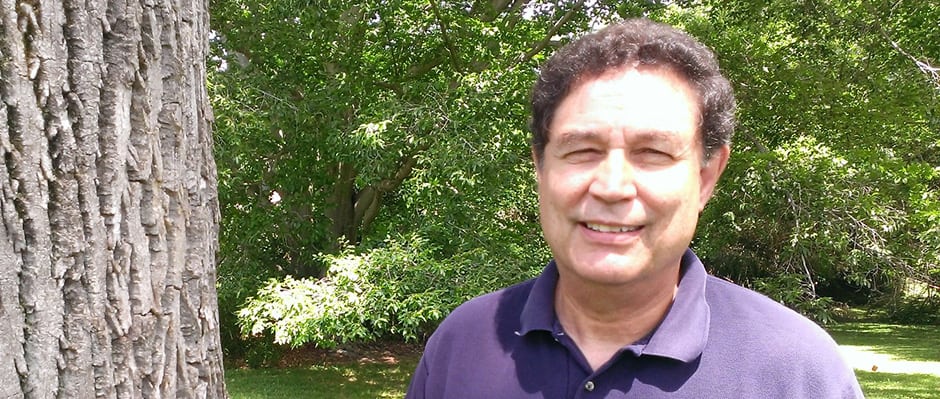Share this article
Thoughts from the Executive Director
In the last several months I have discussed progress the Society has made on some of our strategic themes, including partnerships, publications, communications and finances. These themes are highlighted in the strategic and operational plans we use to set priorities and guide our actions in headquarters. In this note I want to discuss yet another theme, namely the outreach and positioning of the Society in the conservation community. This issue is tied to our goal of promoting a wildlife legacy for the future through wildlife science and conservation. We have come a long way over the last few years in communicating with partners, expanding the reach of our publications, building our capacity for policy assessment and advocacy, and networking within the community. Let me share with you some of that progress and some successes along the way.
One important area where TWS has proactively engaged is through our publications. In previous communications I have described some of the many changes we’ve implemented. For example, The Wildlife Professional is now published six times a year, an increase from four, with improvements in both its content and design. Our journal editors have made real progress in communicating the focus and content of our journals, and our publisher Wiley has instituted a number of changes in electronic delivery and marketing of the journals. Just a few weeks ago we announced that henceforth all our written materials, including TWP, the journals, and the eWildlifer, will be available for free to all members, starting in January 2017. We now reach well over 100,000 individuals on wildlife issues through social media, and we have a dynamic high-content website that carries our messages to a broader audience than ever. These and many other innovations are all designed to increase the exposure, the readership, and hence the influence, of the wildlife content produced by the Society.
Another area of outreach to the conservation community is in policy. I have mentioned before that the Conservation Affairs Network is itself designed to improve communication and coordination on policy issues among the chapters, sections, working groups and home office, with the intent of strengthening our voice and influence on policy issues. In addition, we have now organized our policy statements, technical reports and policy briefs more systematically, and we are nearing the completion and implementation of a policy library that will make it easy for users to search for and capture issues of concern to them. These innovations should increase the value of our policy work by making it more accessible to people in the conservation community who can use it in developing and assessing policy issues.
Yet another area where the Society is expanding our engagement is in technical assessment. For example, we are completing two technical reviews, on shale gas development and use of prescribed fire in management regimes, and we are anticipating additional reviews going forward. We have a cooperative arrangement with USGS for staff to cooperate on analyses and assessments on citizen science, adaptive management, value of scientific information, and other technical issues. We have cooperative arrangements with Ducks Unlimited and others to provide technical input on their science programs and other issues as requested. Finally, we are developing agreements with several partners that will allow us to carry our messages about science-based wildlife conservation through their communications media.
Then there is the rapidly growing area of partnership development. Beyond the promotion of mutual benefits, partnerships afford the opportunity for us to influence partner perspectives and programs on the wildlife issues that motivate the partnerships in the first place. An example is Bayer Bee Care, which focuses on research on pollinators. Through our recently established partner relationship, TWS has already influenced that organization’s thinking and practice regarding the use of regionally-appropriate native plant materials in their fall national planting events. Other examples include our participation and leadership in the National Horse and Burro Rangeland Management Coalition, the Cooperative Research Units National Cooperators Coalition, and the National Conservation Leadership Institute.
Finally, there is expanded networking within the community, with opportunities to engage conservation groups and influence joint deliberations. Examples of this are too many to recount here, but they include our engagement in the Theodore Roosevelt Conservation Partnership, the American Wildlife Conservation Partnership, the North American Bird Conservation Initiative, the Association of Fish and Wildlife Agencies, and many others. In all these instances the Society is participating in a multi-group coalition or initiative or partnership that focuses on issues of interest and concern to us. We have made a concerted effort over the last few years to engage through such collaborations in relationship building and messaging in the broader community.
The net result of these and other efforts by the Society is that we are positioned to a greater degree than ever before in the conservation community, and better recognized as a leader in wildlife science in that community. There are obvious benefits in expanding the role and involvement of the Society. However, we should keep in mind that with such engagements comes the obligation to support them, with staff time and other resources as needed for active participation. We must not lose track of, or fail to plan for, these commitments.








